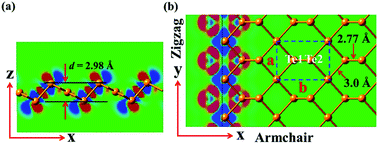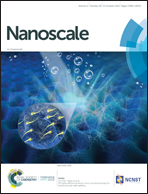Monolayer β-tellurene: a promising p-type thermoelectric material via first-principles calculations†
Abstract
Inspired by the experimental growth of two-dimensional (2D) tellurene (Yixin et al., Nat. Electron, 2018, 1, 228–236) and the recent study of unusually low thermal conductivity of atomically thin 2D tellurium (Jie Ren et al., Nanoscale, 2018, 10, 12997), we carried out systematic calculations for monolayer β-tellurene, focusing on its electrical transport and electronic and thermoelectric properties by means of density functional theory (DFT) combined with deformation potential theory and Boltzmann transport theory. We have found that monolayer β-tellurene exhibits a band gap of 1.5 eV. The carrier transport is highly direction-temperature-dependent, with a high room-temperature transport mobility of 1343 cm2 V−1 s−1 and a relaxation time of 283 fs in the armchair direction for hole transport at room-temperature. It is coincidently favourable in the armchair direction for both the Seebeck coefficient and the electrical conductivity, making the p-type monolayer β-tellurene a highly promising thermoelectric candidate. With a low intrinsic lattice thermal conductivity, the maximum figure of merit (ZT) is 2.9 and 0.84 along the armchair and zigzag directions for p-type doping at 700 K, respectively. The predicted properties demonstrate that monolayer β-tellurene can be a prospective material towards thermoelectric applications.

- This article is part of the themed collection: Editor’s Choice: Thermoelectric nanostructures


 Please wait while we load your content...
Please wait while we load your content...